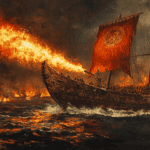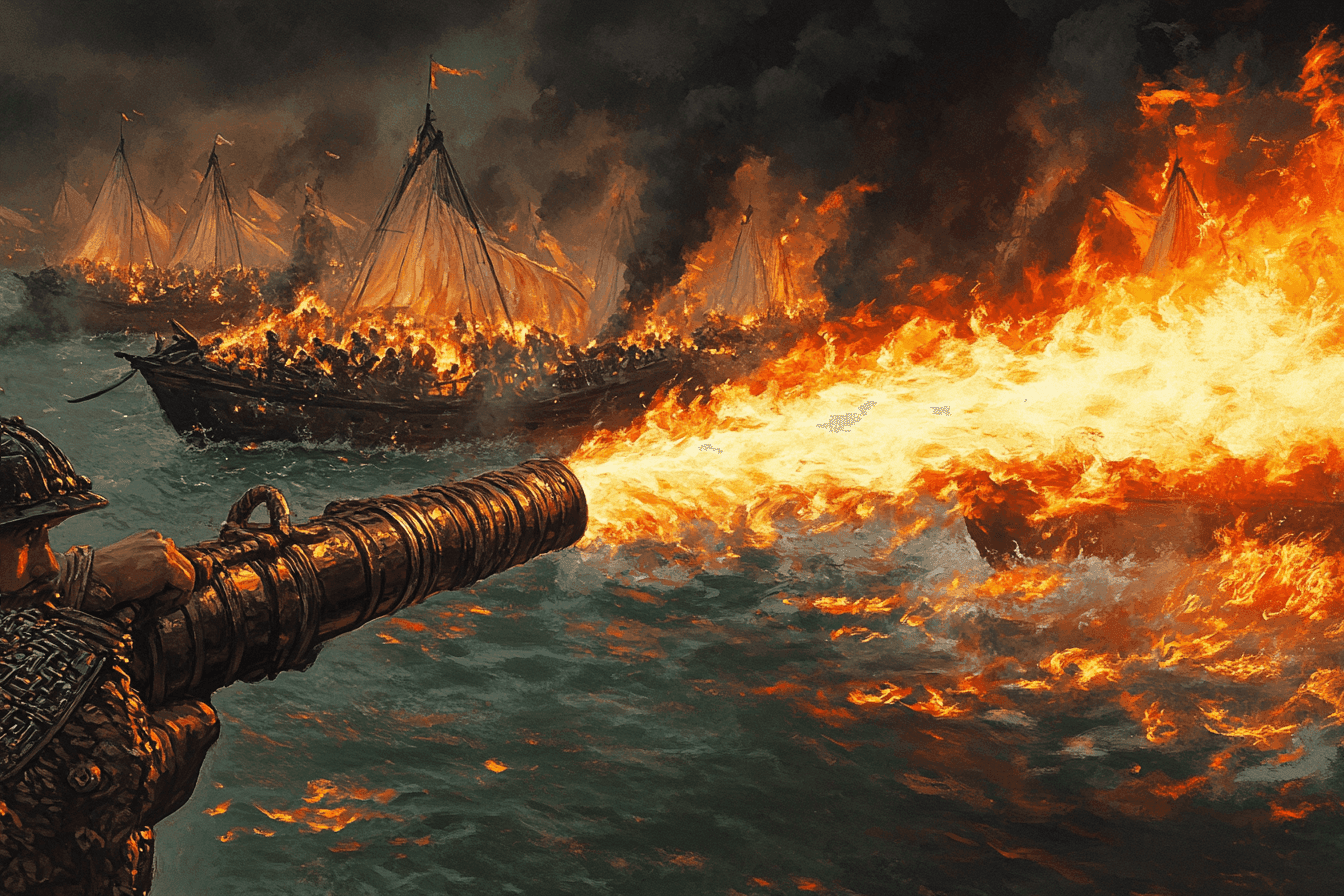
In the long annals of human conflict, few moments have so profoundly altered the course of warfare as the first recorded use of gunpowder as a weapon. This major event took place in 919 CE during the Battle of Langshan Jiang. Here, amidst the swirling mists of the Yangtze River, fire-throwing devices powered by gunpowder set ablaze 400 enemy ships, heralding the dawn of a new technological age.
The Historical Setting: China in Turmoil
The early 10th century was a time of fragmentation and strife in China. The mighty Tang Dynasty had collapsed, giving rise to a patchwork of competing kingdoms. Two such states, Wuyue and Yang Wu, found themselves locked in a bitter rivalry. Their leaders, Qian Liu of Wuyue and Yang Xingmi of Wu, had been skirmishing for decades, each vying for supremacy along the lower Yangtze.
By 919, the Later Liang emperor Zhu Zhen, seeking to assert his influence, ordered Qian Liu to launch a major offensive against Wu. Qian Liu entrusted this critical mission to his son, Qian Chuanguan, who assembled a formidable fleet of 500 ships – one of the largest naval forces seen in the region at the time.
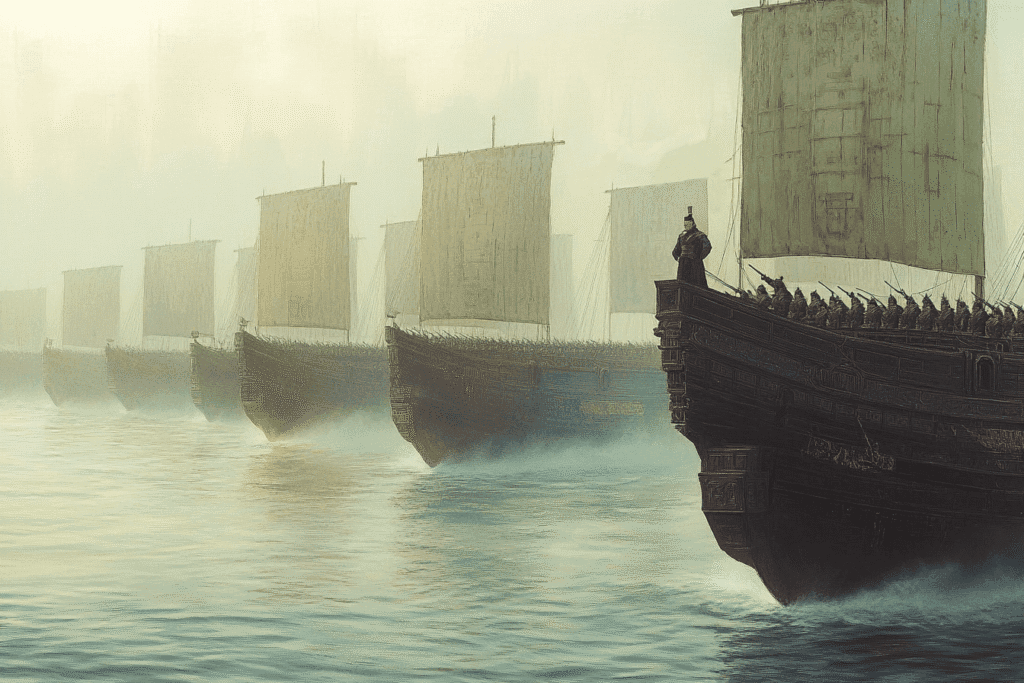
The Battle of Langshan Jiang: Strategy Meets Innovation
As the fleets converged, Qian Chuanguan maneuvered his ships upwind of the enemy. At the critical moment, his forces unleashed their arsenal of unusual weapons designed to sow confusion and chaos among the Wu forces :
- Ashes were hurled at the Wu fleet, blinding their sailors.
- Beans were scattered on enemy decks, causing Wu soldiers to slip and fall.
- Then, with the wind at their backs, the Wuyue unleashed their secret weapon: firethrowers that sprayed burning oil, ignited by gunpowder, onto the enemy ships.
The effect was devastating. Flames leapt from ship to ship, consuming the wooden vessels and sowing panic. Over 400 Wu ships were destroyed, and more than 7,000 men were captured. The water ran red with blood for miles, and the Wu commander, Peng Yanzhang, took his own life as defeat became inevitable.
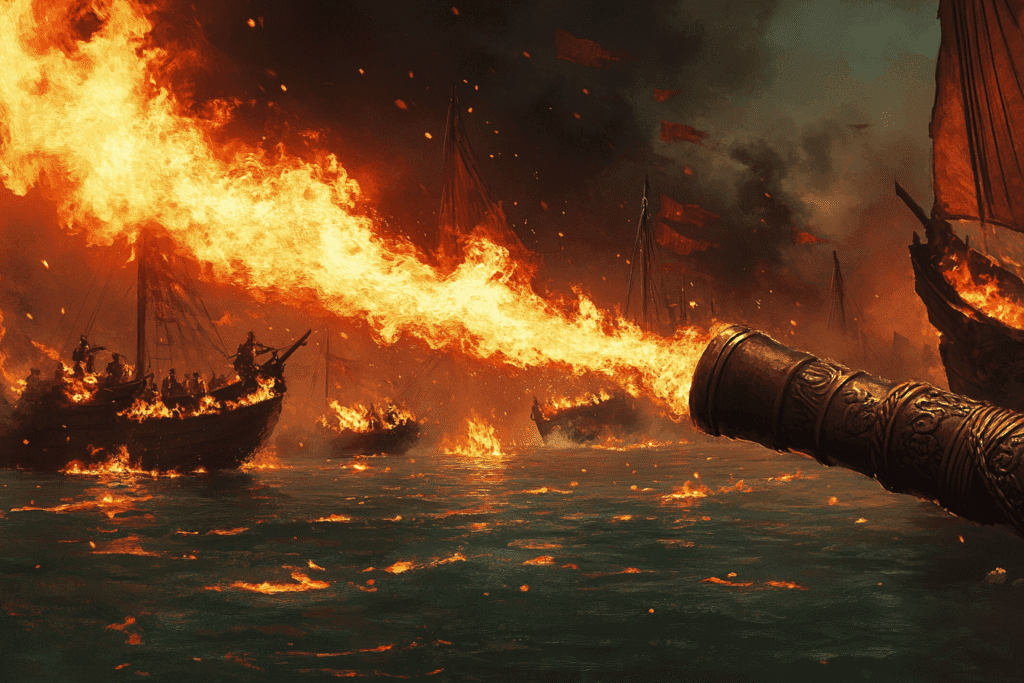
The Weapon: The Fierce-fire Oil Cabinet
The device at the heart of this battle was known as the Fierce-fire Oil Cabinet (喷火气, pēnhuǒqì), a double-piston pump flamethrower that represented a fusion of ancient and novel technologies. The weapon used a form of petroleum – referred to as “fierce fire oil” – which, when combined with gunpowder, could be projected as a stream of flame.
According to historical texts, the oil was imported from Arabia and was prized for its ability to burn even more fiercely when it came into contact with water. The device itself consisted of:
- A brass tank supported on four legs.
- A system of vertical tubes and a horizontal cylinder.
- A piston-rod packed with silk floss and hemp.
- An ignition chamber filled with gunpowder.
To operate the weapon, a heated branding iron was applied to the ignition chamber, igniting the gunpowder. The piston was then pumped vigorously, forcing the oil through the ignition chamber and projecting it as a blazing jet of fire.
The Fierce-fire Oil Cabinet was not just a technological marvel of its time – it was a direct ancestor of later flamethrowers and incendiary devices. It also marked one of the earliest known military applications of gunpowder, centuries before the widespread use of firearms and cannons.
The Aftermath: A New Age of Warfare
The victory at Langshan Jiang was decisive. Wuyue’s use of firethrowers not only secured a strategic advantage but also demonstrated the transformative power of gunpowder in battle. The psychological impact was immense; the sight of ships consumed by inextinguishable flames struck terror into the hearts of opponents and observers alike.
The success of the Fierce-fire Oil Cabinet did not go unnoticed. Soon, knowledge of gunpowder and its military applications began to spread, first throughout China and then across the world. The battle’s legacy can be traced through the evolution of weaponry:
- Incendiary Arrows and Bombs: Gunpowder was soon used to ignite arrows and bombs, increasing their destructive power.
- Early Firearms: By the 13th century, gunpowder had given rise to the first true guns and cannons.
- Global Impact: The technology eventually reached the Middle East and Europe, fundamentally altering the nature of warfare everywhere it went.
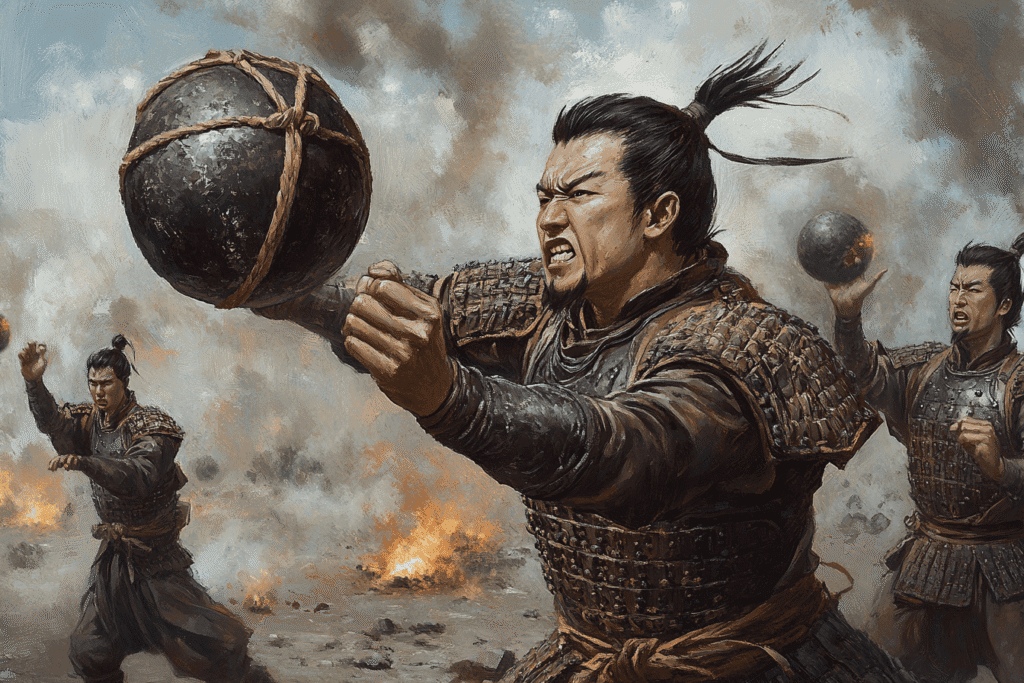
Legacy: The Turning Point in Military Technology
The events of 919 marked the beginning of the end for traditional forms of warfare. The age of sword and shield was giving way to the era of gunpowder, where chemistry and engineering would increasingly determine the outcome of battles. The innovations pioneered at Langshan Jiang laid the groundwork for centuries of military advancement, culminating in the gunpowder empires of the early modern world.
In China, the battle is remembered as a testament to ingenuity and adaptability in the face of overwhelming odds. The story of Qian Chuanguan and his firethrowers is recounted in historical texts and folklore, symbolizing both the promise and peril of technological progress.


